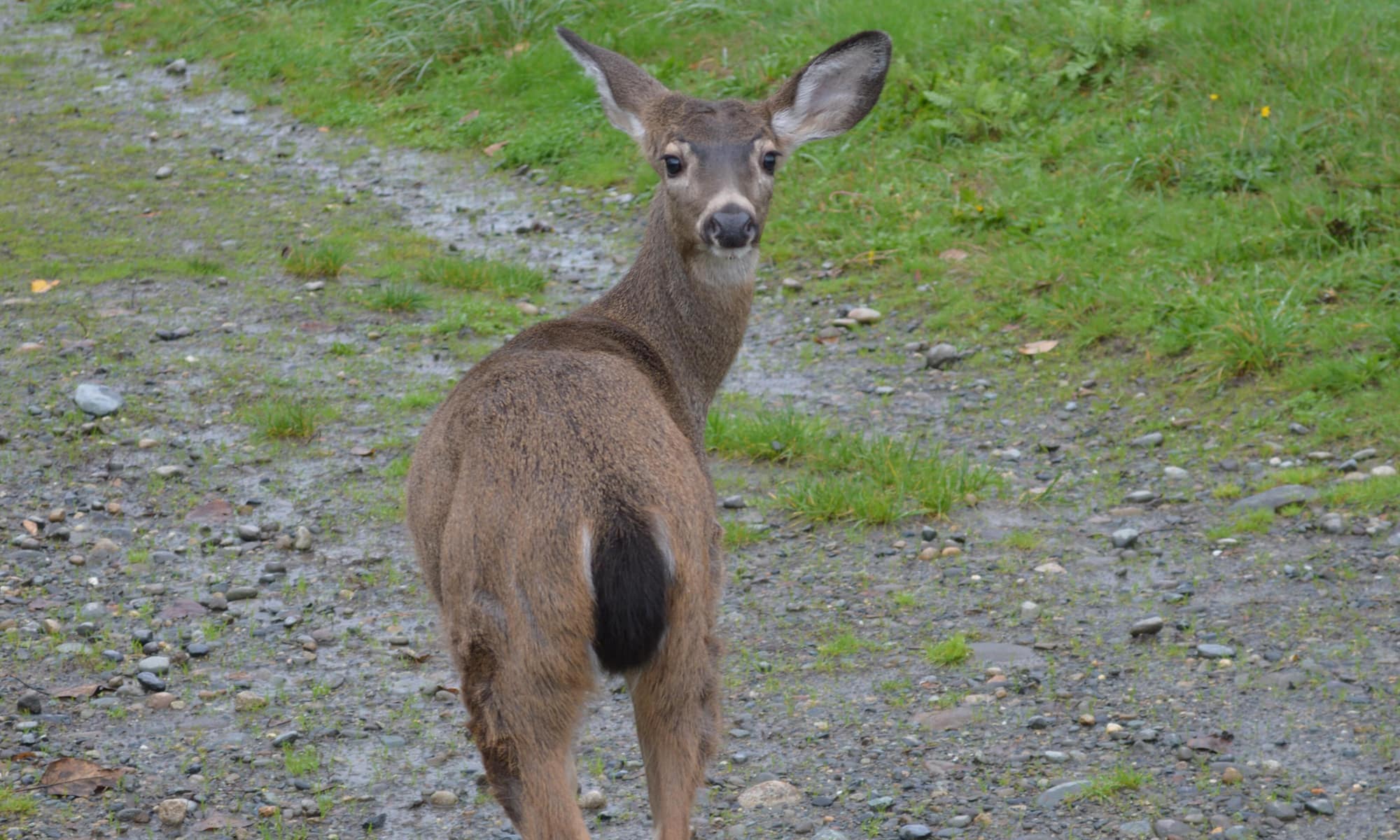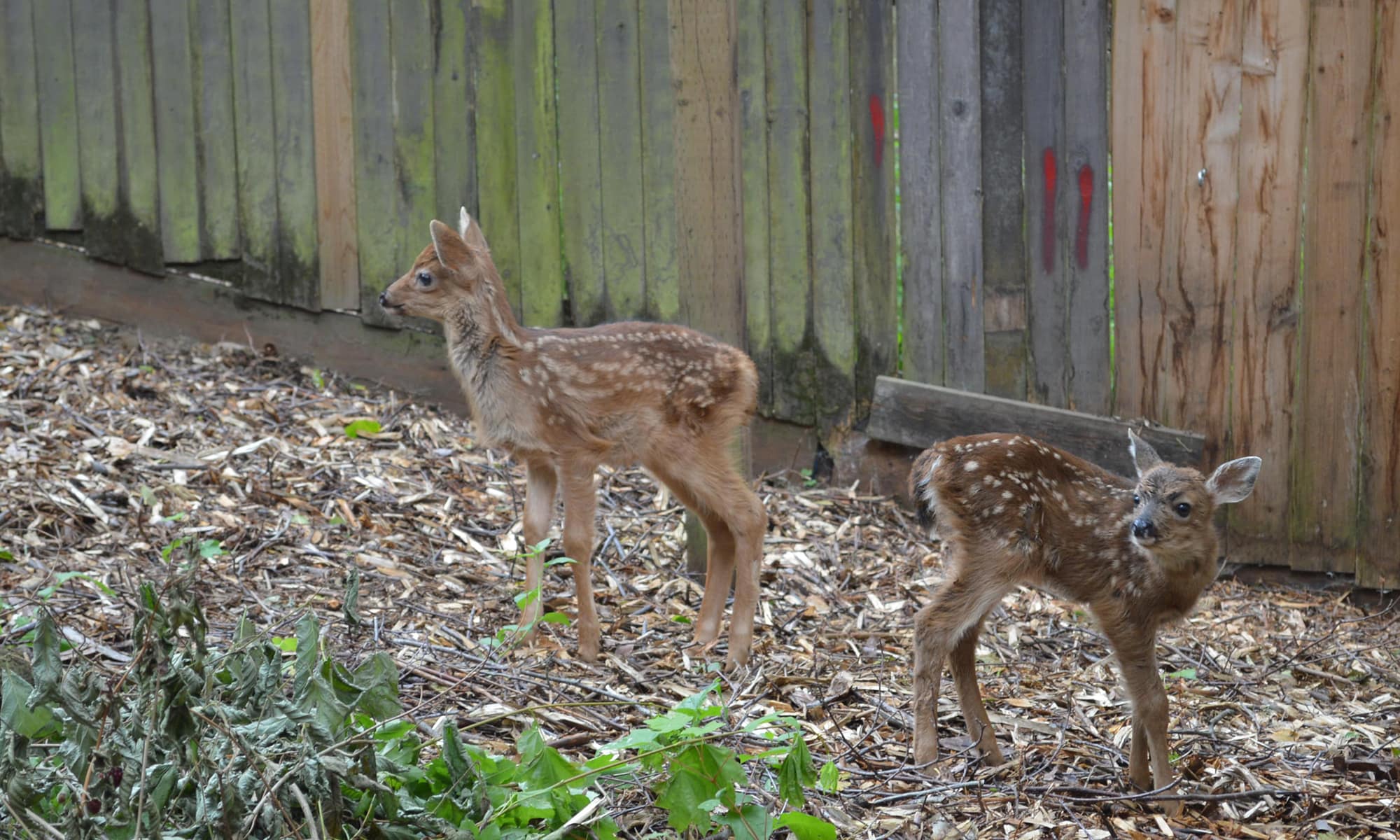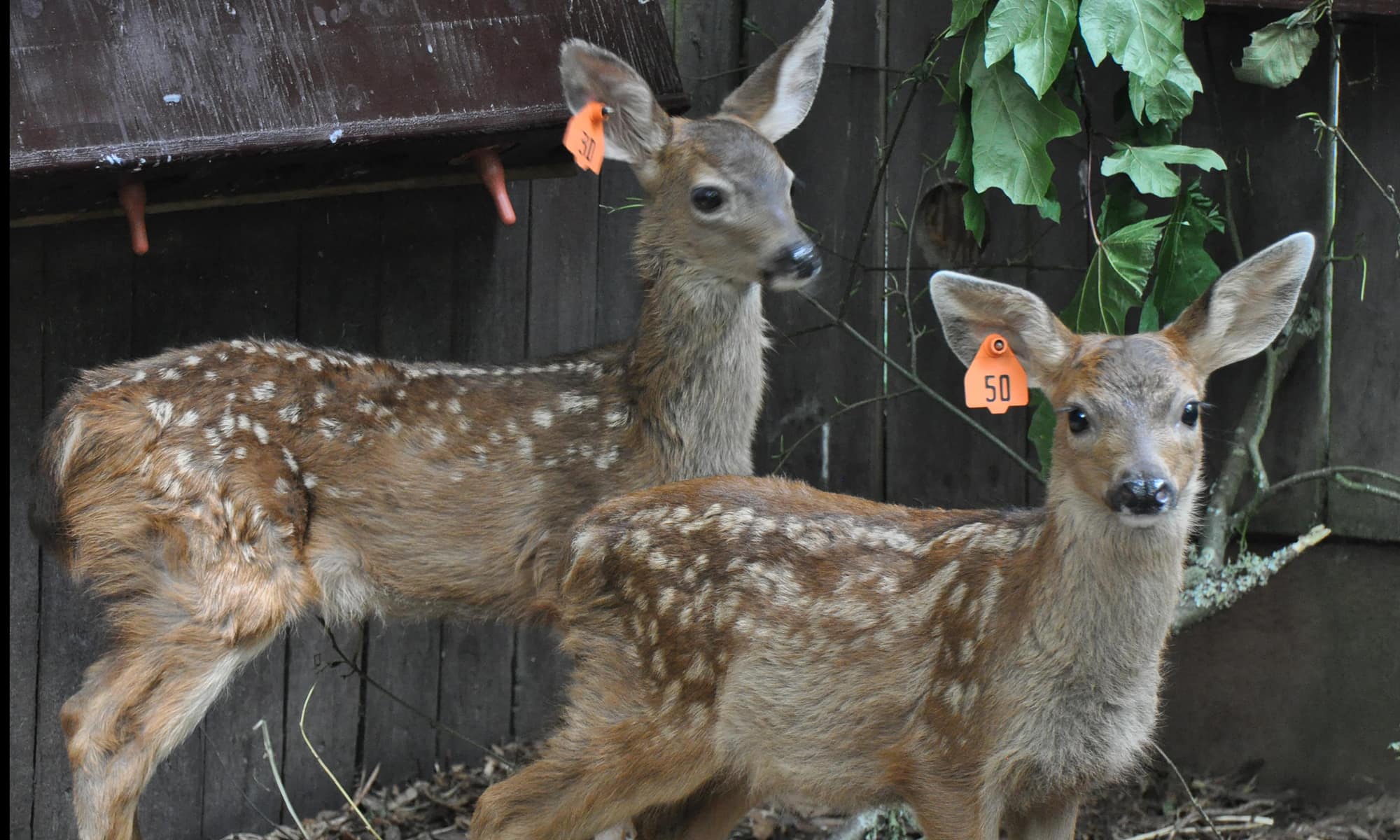Adopting a Cat
Please enjoy this video from Jackson Galaxy, a well-known cat behaviorist and host of...
Read moreDeer are a common sight throughout Washington State, although the species and subspecies of deer varies by region. There are two species and four subspecies of deer that occur in Washington; on the west side of the Cascade Mountains the Columbian Black-tailed Deer (Odocoileus hemionus columbianus) is the dominant sub-species. You can find Rocky Mountain Mule Deer (Odocoileus hemionus hemionus) and White-tailed Deer (Odocoileus virginianus idahoensis) east of the Cascade crest, and the endangered Columbian White-tailed Deer (Odocoileus virginianus leucurus) are found in pockets of habitat along the lower Columbia River.
Black-tailed Deer are a very common subspecies in the Pacific Northwest and can be found along the coast in British Columbia south to northern California. It is one of the nine subspecies of Mule Deer and very similar to them in appearance.

Did you know? Unlike other Mule Deer subspecies, Columbian Black-tailed Deer do not migrate in response to seasonal changes.
During the summer Columbian Black-tailed Deer are tan to light brown and during winter they can be a salt and pepper gray. They have smaller ears and a broader tail than Mule Deer. The backside of their tail is covered with dark brown hair that grades to black near the tip (top left) where Mule Deer tails just have a black tip (top right). When alarmed or fleeing from danger, the tail may be raised, displaying broad, white underside. Adult bucks weigh between 140 to 200 lbs while does weigh between 90 and 130 lbs.
During the breeding season bucks develop antlers. These bone structures grow from attachment points on the skull called pedicles. While the antler grows it is covered with velvet that delivers nutrients to the growing bone. When the antler is complete the velvet dries and peels off, leaving the hard mineralized bone behind. As males age, their antlers grow thicker and larger. The main purpose of antlers is sexual selection. They are used for male to male competition to establish dominance and in turn assist females when choosing a mate. Males with the largest antlers are more likely to obtain mates. After the breeding season, bucks will shed their antlers and grow a new set the following fall.
Did you know? Bucks scrape off the velvet covering their antlers by rubbing them against young trees. This also communicates their presence and readiness to breed.
Habitat
Columbian Black-tailed Deer prefer bushy logged lands and coniferous forests, but they often show up in the suburbs with sufficient greenbelts and parks.
Beds
Their bed is an area of flattened vegetation that is 3 to 4 feet long and 2 to 3 feet wide. Deer sleep in dense cover or tall grasses and may return to the same spot over many days.

Deer breed during November and December, and does give birth roughly six months after mating. During the first few weeks of life, the fawns are often left alone for extended periods of time while their mothers forage for food.
While the fawns wait for their mother to return, they lay flat and motionless, usually in grassy cover, so they do not attract the attention of predators. As they grow larger and steadier, the fawns stay with their mothers at all times and forage alongside her. By the end of the summer, the fawns are no longer dependent on their mother, but they may stay with her for many more months.
Genetic differences aside, all deer in Washington State have similar food habits. They are herbivores, eating a variety of plants, fruit, nuts, lichens and fungi. They feed largely on plant parts called browse, which means they eat the leaves, buds and young shoots of woody vegetation.
Did you know? Deer are ruminant species much like cows. They have four stomachs and repeatedly chew their food to aid in digestion.
Deer are typically crepuscular, but they may be active at any time of day. They travel in small family groups consisting of two or more generations of related females and their offspring. They have excellent sight and smell. Their ears can move independent of each other and pick up unusual sounds that might signal danger. They are creatures of habit and will use the same trails over and over again. They are also quite capable of learning and adjusting their activity patterns and habits to accommodate changes in their environment including the presence and activities of humans.
Did you know? Deer communicate with the aid of scent and pheromones from glands located on their lower legs.

Most homeowners enjoy seeing deer around their homes, but enjoyment can turn to annoyance when deer feed on ornamental shrubs, garden vegetables and flowers. Occasionally a homeowner may become worried when deer become habituated and approach people. Most conflicts that arise can be managed with habitat modification, exclusion or a change in behavior on the part of the property owner.
Never feed deer
Intentional feeding of deer may attract more of the animals to your property and may contribute to their becoming habituated to humans. The more comfortable deer are around humans, the more likely they will help themselves to gardens and plants near houses.
While you may not mind, your neighbors may take issue with their plants being eaten. Also, deer are large, and it may be disconcerting for some people if they are approached by a deer looking for a handout. The situation may even become dangerous depending on how strongly habituated the deer are and who they are approaching for food. Habituation may also lead to the deer to wander into roads or other areas in which they endanger themselves and/or humans.
Fencing
Appropriate fencing is the most effective way to exclude deer from yards or gardens. There are also several species of deer-resistant native plants that you can use to replace more vulnerable ornamentals. Commercial deer repellents are also available to protect small areas or individual plants.
If you find a deer fawn
If you live in an area where deer are common, or if you hike or camp, you may at some point encounter a deer fawn. In most cases it is best to leave the fawn where she is and leave the area so the mother can return to care for her.
If you are worried the fawn may be injured or distressed, PAWS can help you determine if the baby wild animal needs help.
Animal Diversity Web, November 22, 2015. Odocoileus hemionus
Deer Friendly, November 22, 2015. The Decline of Deer Populations
Feldhamer G.A., Thompson B.C. & Chapman J.A. (Eds). (2003). Wild Mammals of North America, Biology, Management, and Conservation (2nd ed.). Baltimore MD: The Johns Hopkins University Press.
Washington Department of Fish and Wildlife. November 12, 2015. Living with Wildlife: Deer.
Please enjoy this video from Jackson Galaxy, a well-known cat behaviorist and host of...
Read moreHow much will it cost to care for a new animal companion? It’s important to...
Read morePlease enjoy this blog post from Victoria Stilwell’s positively.com website....
Read more